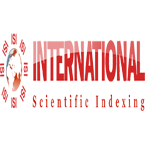Article / Research Article
1Dept. of Obstetrics & Gynecology, United Hospital Limited, Dhaka, Bangladesh
2Dept. of Obstetrics & Gynecology, United Hospital Limited, Dhaka, Bangladesh
3Dept. of Obstetrics & Gynecology, United Hospital Limited, Dhaka, Bangladesh
Nighat Ara
Dept. of Obstetrics & Gynecology
United Hospital Limited
Dhaka
Bangladesh
31 October 2020 ; 15 November 2020
Bangladesh is a South East Asian country; the first case of COVID-19 was detected in early March 2020. In a land where 2.11% of the total world population resides; a devastating surge of the Pandemic of COVID-19 was anticipated to overwhelm the health sectors [1]. Specific high risk groups were identified and possible efforts to minimize both morbidity and mortality have been ensured. Pilot health projects launched with mass campaigns on preventive measures from COVID-19 and to educate people about mode of transmission, home treatment and isolations in mild cases. Apart from general cases, the obstetric cases became a delicate challenge for health professionals. Here both mother and babies requires standard treatment protocol, care along with unprecedented psychological support system for the mothers in all three antepartam, intrapartam and postpartam periods. A well designed care protocol introduced for neonatal care. A national guideline on clinical management of corona virus disease 2019 (COVID-19) has been developed on 30th March 2020 by Disease Control Division in combination with Director General of Health Services, Ministry of Health and Family Welfare of Government of the People’s Republic of Bangladesh [2]. The guidelines have been updated time to time to incorporate latest evidence and recommendations of WHO.
New COVID-19 units reconstructed both in Government and Private sectors with adequate logistics, ICU support and trained stuffs with proper mother and baby isolation centers. A comprehensive infection prevention and control (IPC) is strictly maintained in every aspects of case management from community to hospital ICU. Severe and critical cases are treated in designated COVID-19 hospitals or units. Laboratory for patient screening tests and triage became a huge challenge for health facilities required constant supervision. Proper early diagnosis and case detection became the success tool of the disease. Two obstetric cases COVID-19 (SARS CoV2 virus) treatment and outcome have been discussed in this topic to highlight the management issue and to adopting national protocol.
COVID-19, Mode of Delivery, Intrapartum and Postpartum Care
COVID-19 (SARS CoV2 virus) is an infectious disease caused by newly developed corona virus rapidly spreading in nature by mode of droplets and fomites with varying types of symptoms mostly flu like, unpredictable outcomes disease progression in different individuals. In this topic two obstetric cases of COVID-19 with severe pneumonia2 and mild form flu like symptoms discussed and compared along the line of treatment protocols and impact on individual pregnancy outcome.
Elaborated patient history of exposure, travelling and symp¬toms onset
Retrospective case studies with anonymity (as per patient’s wishes)
Accurate specimen collection
Both Nasopharyngeal and Oropharyngeal swabs on the date of examination
Supportive investigations done for co-morbidities
Strict isolation maintained and patient treated in covid unit
Routine fetal monitoring continued on hourly basis
After recovery patients were allowed to leave hospital with fol¬low up schedules with proper guidelines to follow at home and advice about precautions to be followed to avert recurrence of disease transmission
Follow up testing to ensure virus shedding status of the patient after 2 weeks of recovery
A young women aged 35 years primi at 37+ 3 weeks of preg¬nancy with COVI-19 test positive, Hypothyroidism, GDM (Gestational Diabetics Mellitus) on OHA (Oral Hypoglycemic Agent), less fetal movements came to A & E with complains of fever for 3 days, cough for 2 days followed by acute onset of shortness of breath
Patient restless with shortness of breath
- Pulse – 100 beats/minute
- BP – 130/80 mm of Hg
- Temperature – 1010F (despite of taking oral Paracetamol and tapid sponging at home for last 3 days)/li>
- Respiratory rate – 36 breaths/minute
- SPO2 (on pulse oxymeter) – 89-90%
- Lung – Bi lateral coarse crepetations present
- Per abdominal – Fetal Heart rate 156 beats/minute (by Hand Held Doppler)
- Fetal Movements – Present but less as per patient’s state¬ment
- Initial resuscitation commences with high flow O2 sup¬plementation at a rate of 10-12 liter/minute and essential investigations carried out.
| Test | Results | Units | Reference | |
|---|---|---|---|---|
| RBC (Total Count) | 5.2 x 106 | /μl | M: 4.5-5.5 | |
| Hemoglobin | 13.1 | gm/dl | F:11.5-16.5 | |
| HCT | 38.0 | % | F:37-47 | |
| MCV | 72.5 | fl | 76-94 | |
| MCH | 21.9 | pg | 27-32 | |
| MCHC | 30.3 | gm/dl | 31-35 | |
| PLATELET | 80.0 X 103 | – | 150-450 | |
| MPV | 11.2 | fl | 5-11 | |
| TC-WBC | 28.4 x 103 | /μl | 4-11 (Adult) | |
| Neutrophil | 87.3 | % | 40-75 | |
| Lymphocyte | 62 | % | 20-50 | |
| Monocyte | 3.2 | % | 2-10 | |
| Eosionophil | 2.2 | % | 1-6 | |
| Basophil | 0.2 | % | < 1 | |
| IG | 0.2 | % | 0.06 | |
| Non Panel Item | ||||
| Procalcitonin(CMIA) | 0.58 | ng/ml | < 0.1 – Normal <0.5- Local bacterial infection is possible. >0.5-<2 Systemic infection (Sepsis is possible) |
|
| Serum lactate | 4.8 | mmol/L | 0.5-1 mmol/L | |
| SGPT | 89.0 | IU/L | Up to 55 | |
| SGOT | 130.0 | IU/L | Up to 10-40 | |
| ALP | 153.0 | IU/L | 40-150 | |
| Serum Creatinin | 0.96 | mg/dl | 0.84-1.21 | |
| C-Reactive Protein | 33.0 | mg/L | < 6 | |
| S. Uric acid | 4.80 | mg/dl | 2.4-6 | |
| HbA1C | 6.8 | % | Prediabetic: 5.7-6.4 Diabetic: > 6.5 |
|
| TSH | 1.6 | mIU/L | 0.4-4 | |
| BLOOD GAS ANALYSIS | ||||
| PH | 7.4 | % | ||
| Pa CO2 | 21.4 | % | ||
| Pa O2 | 130.9 | % | ||
| HCO3 | 23 | % | ||
TYPES OF SAMPLE : Naso-Pharyngeal Swab and Oro- Pharyngeal Swab
TEST RESULT : COVID-19 (SARS-CoV-2) RNA – Detected
TEST PLATFORM : PCR KIT: CE & IVD marked Kit
TEST METHOD : REAL TIME PCR)
CHEST X-RAY : P/A view (with shield)
RESULT : Bi-Lateral Opacities detected
As per patients clinical sign symptoms and investigation re¬sults, the case have been diagnosed as primi 37 weeks pregnan¬cy with COVID-19 (SARS CoV2 virus) severe pneumonia and sepsis with co-morbidities [2].
- Treatment Protocol followed as per Bangladesh National Guideline
- Patient shifted to GHDU (General High Dependency Unit) at Covid isolation unit.
- Initial high flow O2 supply continued (15-18 L/Min) with oxygen hood with a target to maintain SPO2 ≥ 92%
- 14 gauze IV channel secured with crystalloid fluid at a rate of 8-10 drops/Min maintained
- Injections Remdesivir (Vira Flue/Remever)-FDA-A2
- Loading dose: 200mg IV for 30-120 minutes and then 2-10 Maintenance dose of 100mg IV q/day for 10 days
- Injection Meropenem (FDA-A) after skin test 1gm IV 8 hourly for 10 days
- Fluid restriction up to 1.5-2 L/day including oral intake to avert fluid over load
- Nebulization with Windel Plus (Salbutamol 2.5mg and Ipratopium bromide (BP Ipratopium 0.5 mg) 6 hourly till further order.
- Tablet Aspirin 75mg once daily – continued
- Tablet Metformin HCL 500 mg twice daily
- Injection NOVO RAPID(Flex-Pen 100 units/ml) – 0+6+0 once daily subcutaneously
- Tablet Thyrox (25μg) before breakfast
- Symptomatic treatment: Tablet Paracetamol (500mg)
- Tablet Antihistamine
- Steam Inhalation 3-4 times a day
- Strict Input/output and vitals, temperature charts main¬tained
- Fhr- Monitored with hand held Doppler hourly
- CTG (Cardiotocography) once daily
- Fetal kick counts recorded as per mother’s statement
- On day 2 as patient stabilized USG for bio-physical profile carried out (BPP 8/10)
- On daily basis WBC, SERUM LACTATE, SERUM ELECTROLYTE reviewed
- On following next 5 days patient showed remarkable im¬provement.
- SPO2 ≥ 96% with oxygen supplement of 5L/Min main¬tained.
- Shortness of breath and other clinical sign symptoms im¬proved.
- On combined decision of Obstetricians consultant, Re¬spiratory consultant and COVID Expert panel of general
- HDU, current management continued and patient shifted back to general COVID ward under strict supervision and isolation.
- By day 9 patient was able to maintain SPO2 ≥ 98% at room air and afebrile
- On clinical examination lung was clear, respiratory rate- 22 breaths/m observed.
- On basis of patient’s condition discharged from hospital was done on day 10th
- Cessation of antiviral drug done
- Asked about dyspnoea, chest pain, persistent or worsen cough
- Symptomatic treatment continued (like mild cough, poor appetite and extreme weakness)
- Emphasis given on home isolation, frequent hand wash(20 seconds each time) and hygiene, social distancing, cough etiquette (use tissue paper or elbow followed by hand wash), wearing medical mask, maintain social distancing and to avoid public transports
- Immediately seek medical advice if:
– Recurrence of respiratory distress
– Altered foetal movements
– Extreme lethargy
– Worsening fever and cough
– Altered mental focus - There was no plan expedite delivery without any obstetric cause
- Routine schedule antenatal follow-up carried on
A young women of age 35 years old in her second gravida [P1 (C/S) + 0] at 36+0 weeks of gestation came to A & E department with PPROM and mild flu like symptoms with altered bowel habits for last 3 days, and lower abdominal pain along with passage of fluid per vaginally for last 4 hours. The patient had associated co-morbidities like GDM (on insulin), ICP treated by urodyoxycholic acid.
- Pulse – 76 beats/minute
- Blood Pressure- 110/70 mHg
- Temperature – 990 F
- Per Abdomen:
- Fundal Height – 34-36 cm correspond to gestational age
- Foetal Heart rate – 176 beats/min (by hand held Doppler)
- Foetal movement- Reduced (as per mother statements)
- Pooling of amniotic fluid present
- No foul smell
- No blood stains discharge
- Abnormal interpretation
| Test | Results | Units | Reference | |
|---|---|---|---|---|
| RBC (Total Count) | 4.8 x 106 | /μl | M: 4.5-5.5 F: 3.8-4.8 |
|
| Hemoglobin | 10.1 | gm/dl | F:11.5-16.5 | |
| HCT | 38.0 | % | F:37-47 | |
| MCV | 78.5 | fl | 76-94 | |
| MCH | 29.9 | pg | 27-32 | |
| MCHC | 31.3 | gm/dl | 31-35 | |
| PLATELET | 200.0 X 103 | – | 150-450 | |
| MPV | 10.2 | fl | 5-11 | |
| TC-WBC | 16.4 x 103 | /μl | 4-11(Adult) | |
| Neutrophil | 62.3 | % | 40-75 | |
| Lymphocyte | 48 | % | 20-50 | |
| Monocyte | 2.2 | % | 2-10 | |
| Eosionophil | 1.0 | % | 1-6 | |
| Basophil | 0.0 | % | < 1 | |
| IG | 0.0 | % | 0.06 | |
| Non Panel Item | ||||
| Procalcitonin(CMIA) | 0.10 | ng/ml | < 0.1 – Normal <0.5- Local bacterial infection is possible. >0.5-<2 Systemic infection(Sepsis is possible) |
|
TYPES OF SAMPLE : Naso-Pharyngeal Swab and Oro-Pharyngeal Swab
TEST RESULT : COVID-19 (SARS-CoV-2) RNA – Detected (+)
PCR KIT : CE & IVD marked Kit
TEST METHOD : REAL TIME PCR)
CHEST X-RAY : P/A view (with shield), RESULT- Normal
VAGINAL SWAB (Microbiological Testing): Presence of
Clue cells indicating bacterial vaginosis
| Test | Results | Units | Reference |
|---|---|---|---|
| C-Reactive Protein | 86.0 | mg/L | < 6 |
| HbA1C | 6.1 | % | Pre-diabetic : 5.7-6.4 Diabetic : > 6.5 |
| TSH | 38.0 | mIU/L | 0.4-4 |
Since there was no other symptoms apart from obstetric related cause initially patient was placed as suspected Covid-19 in maternity unit in isolated care (Covid-19 report waiting) for observation under obstetrician consulted led care.
- IV fluid was ensured
- Prophylactic antibiotic commenced (suspecting chorioamnitis)
- Tocolysis: Tablet Nifedipine 10mg TDS daily
- Single dose of corticosteroid was considered anticipating immediate delivery
- Antispasmodic (Inj. Tiemonium Methyl sulfate i.e. Visceralgine IM/IV Inj. 5mg/2ml) – 2 ampoule IM stat given
Monitoring - No improvement was observed in next 2 hours
- Intense lower abdominal pain and irregular uterine contractions persists
- CTG repeated – Pathological Interpretation
- Per vaginal examination – Fluid discharge was continuing with no sign of patient in labor, cervical OS was closed
Due to persisting deterioration of the foetal condition evident by CTG interpretation and intense irregular contractions anticipating uterine rupture as patient has previous caesarean section obstetrician consultant decision was taken to carry out category one C-section. Delivery was conducted isolated Covid-19 delivery unit with all the protective precautions maintain by the delivery team. A male baby 2.74 kg with two twists of cords around the neck was delivered (cautiously cord was untwisted). The baby was asphyxiated initially and recovered after primary resuscitation. Since mother was suspected Covid-19, the baby was placed in isolated nursery care but breast feeding was ensured by expressed breast milk.
The mother Covid-19 test results became positive the next day. Since patient was asymptomatic; she was transferred to Covid-19 unit care and routine post caesarean treatment followed. The baby Covid-19 test was sent and the test result became negative.
Expressed breast feeding was continued for further 14 days. The baby was handled by single care staff on roster basis. The mother was allowed to visit from a distant glass separated area in the nursery.
Covid-19 test was repeated and test result became negative. Discharge from the hospital with complete home care protocols for both the mother and the baby was given.
- Home isolation for further 2 weeks maintained social distancing using mask and gloves while handling the baby
- Avoid close contact with the baby (Hugging, Kissing)
- While feeding the baby, mask should be used all the time
- Frequent hand wash for 20 seconds using alcohol based sanitizer before handling baby’s feeding utensils and stuffs
- Avoid contact with any suspected sick individual, social gathering and private transport
- Avoid hospital visits unless emergency avail tele medicine and over phone consultations as much as possible.
- Ensure plenty of fluid, nutritious food and high rich protein diet.
- If any symptoms arise like shortness of breath, fever, cough and excessive weakness or sweating seek medical help immediately.
- There is no contraindication for absolute breast feeding with proper precaution.
- Baby should be handled by certain individuals only with proper precautions
- Individuals should maintain cough etiquette wearing mask all the time while handling the baby and do frequent hand wash.
- Overcrowding, Close contacts with the baby by sick individuals should be avoided. Safe distance should be maintained all the time.
- All the babies stuff (Linen, Feeding Utensils) kept and washed separately from other members of the family.
- Public transport should be avoided as much as possible.
- Routine vaccination should be followed with through knowledge about the vaccine center facilities and service provider [4,5]. Vaccination of new born is considered an essential service particularly in low and middle income countries [4].
COVID-19 (SARS CoV2 virus) is a severe AR infection caused by Novel evolving severe ARS corona virus 2 identified causing outbreak of Pneumonia for unknown cause in Wuhan city and Hubei province (China) in December 2019. WHO declared COVID-19 (SARS CoV2 virus) as a pandemic disease on 11 March, 2020. Globally 216 countries are affected so far [6]. Both cases mentioned in this article were managed following the National Guidelines on Clinical Management of Corona virus Disease 2019 (Covid-19) and produced successful outcome, thus establishing the proper adaptation of the guideline. Since there is no specific treatment line as the sign symptoms are individualized; supportive and symptomatic care with early detection keeping as priority yielded good recovery rate. Case 1 since there was no obstetric emergency baby was delivered in due expected date by vaginal mode delivering healthy baby without any complications. Both babies were tested Covid 19 negative and in good health. No evidence of vertical transmission observed nor any difficulties in establishing breastfeeding was evident. Psychological support exhibited dramatic response in quick recovery. Overall management of mild and severe groups showed no significant changes in treatment protocol except medications. Psychological supports and motivations of preventive measures played a major key role in management protocol. So far there has been no data of vertical transmission. In this article two category cases (mild and severe) has been highlighted as exemplary how National Guidelines on Clinical Management of Corona virus Disease 2019 (Covid-19) can be successfully adopted.
-
- United Nation Population Division, 2020.
- National Guidelines on Clinical Management of Corona virus Disease 2019 (Covid-19), Version 4.0, 30 March 2020, Disease Control Division, Directorate General Health Services, Ministry of Health & Family Welfare, Government of People’s Republic of Bangladesh/ WHO.
- IEDCR (Institute of Epidemiology Disease Center and Research) & WHO protocol.
- Vaccination and Immunization Training Manual WHO/ Europe and Vaccine Safety and False Contraindication Training Manual, Copenhagen- WHO Regional Office.
- Guidance on routine immunization service during Covid-19 pandemic in the WHO European Region, 20 March, 2020.
- United Nations Geo Scheme/ Worldmeter’s Covid-19 Data.













